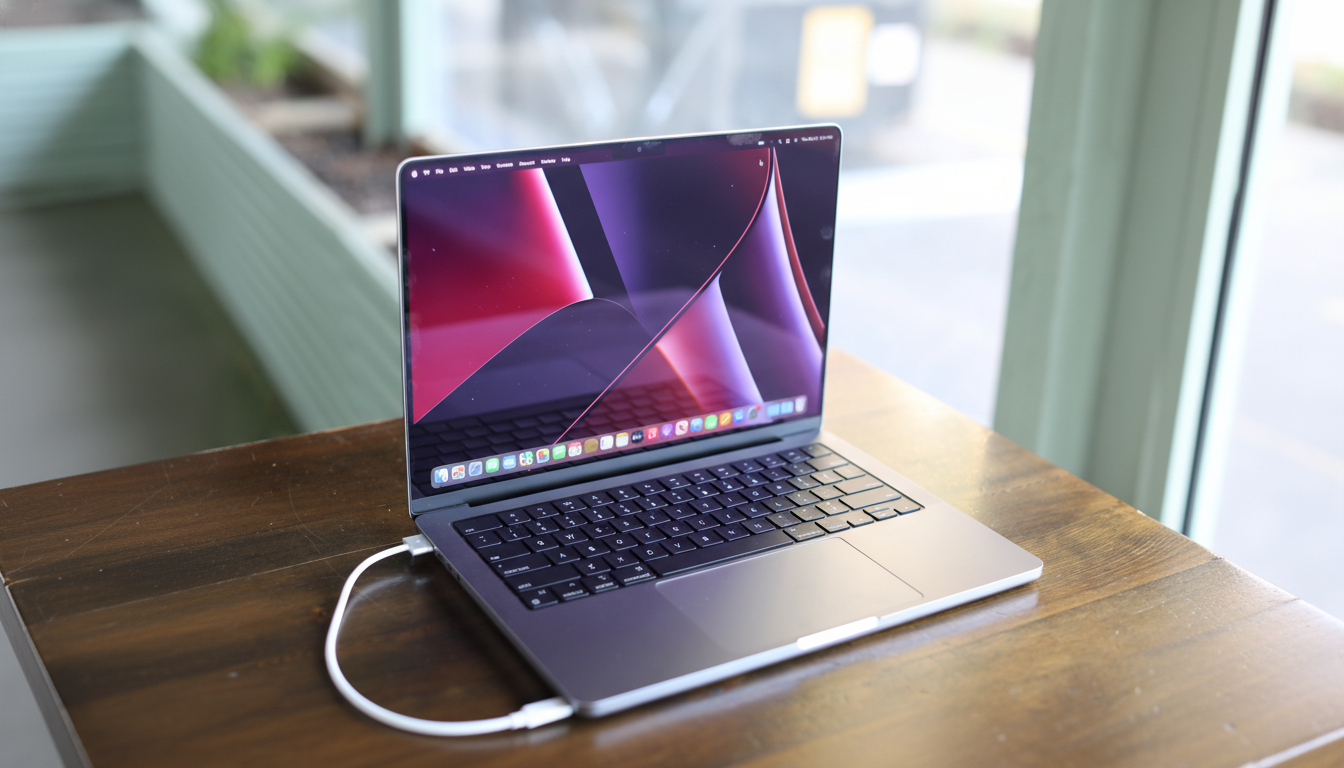Apple’s latest 14-inch MacBook Pro looks familiar, but the story inside is anything but. In back-to-back tests against last year’s M4 model, the base M5 configuration posted clear wins in CPU speed, graphics, and on-device AI—enough to reshape what the entry-level Pro can do for creators and developers.
Performance and AI compute gains reshape the base Pro
The M5 sticks with a 10-core CPU layout—four performance, six efficiency—but rides a refined 3nm process and deeper architectural tweaks.
- Performance and AI compute gains reshape the base Pro
- Graphics upgrades and ray tracing in modern games
- Battery life results and thermal design observations
- Display, design, and input experience remain familiar
- Ports, connectivity, and external device support
- Storage performance and configuration options expand
- Software updates and the state of Apple Intelligence
- Who should upgrade and the value of the M5 base Pro
- Conclusion: what the M5 changes for the base model

In cross-platform benchmarks such as Geekbench and Cinebench from Primate Labs and Maxon, respectively, the M5 averaged roughly a 19% uplift over the M4 in CPU tests and shaved about 20 seconds off a standard 4K HandBrake transcode—gains you feel in code compiles, Lightroom exports, and even multitasking.
The biggest leap lands in AI. Apple didn’t just beef up the 16-core Neural Engine; it embedded a Neural Accelerator into every one of the 10 GPU cores, effectively doubling the silicon dedicated to machine-learning tasks. In GPU-accelerated AI workloads, that translated to up to 3x faster throughput in targeted tests. For Apple Intelligence features and locally run LLMs, that means faster summarization, text-to-image generation, video prediction, and on-device inference without draining the battery.
Apple also quotes 150 GB/s unified memory bandwidth on the base chip, helping sustain higher mixed CPU-GPU-NPU utilization during real application runs.
Apple’s message is apparent: yes, Windows “AI PC” rivals incorporate Intel, AMD, and Qualcomm silicon, known for MLCommons-hyped and vendor-demonstrated on-device AI as a major capability-centered target. It would seem that, at this time, no one else will hit Apple in gravity-centering silicon sales.
Graphics upgrades and ray tracing in modern games
Both generations list 10 GPU cores, but the M5’s third-generation ray-tracing block and shader upgrades are a different class. In UL’s 3DMark suites, the M5 delivered strong increases across raster, stress, and ray-traced scenarios.
Running Cyberpunk 2077’s Ray Tracing Overdrive test is a notable milestone: the M5 could complete it, albeit with modest results; the M4 couldn’t finish it.
Practically, you can now target a stable 30 fps in many recent titles using the “For This Mac” presets while keeping attractive visual settings. It won’t substitute for a high-wattage gaming rig, but creators who edit between gaming now have a realistic setup with this 14-inch Pro.
Battery life results and thermal design observations
Both generations are rated around 24 hours of video playback: the M5 managed 24:06, while the M4 went even longer at 28:33 in testing.

With the chassis and cooling solution unchanged, steady-state performance is similar, but if maximum battery life is critical, the M4 remains the best.
Display, design, and input experience remain familiar
The 14.2-inch Liquid Retina XDR panel returns with 3,024×1,964 resolution at 254 ppi, mini-LED local dimming, and excellent HDR. It’s still one of the few laptop screens that can credibly stand in for a reference display in the field. Nano-texture glass remains an option for glare control.
The aluminum chassis, keyboard feel, and expansive Force Touch trackpad are unchanged and still class-leading.
Ports, connectivity, and external device support
MagSafe 3, three Thunderbolt ports, HDMI, an SDXC slot, and a 3.5 mm jack all return. While the M5’s internal bandwidth increases, Thunderbolt on the base model doesn’t jump to Thunderbolt 5—consistent with Apple’s strategy of reserving that for Pro/Max tiers. The existing I/O mix is versatile for most creators: single-cable docking, SD ingest, and external display support are all covered.
Storage performance and configuration options expand
Apple claims up to 2x faster internal SSD performance on the M5 generation, shortening project load times and improving scratch performance in apps like Final Cut Pro and Photoshop. Max capacity also doubles to 4 TB on the 14-inch model, up from 2 TB on the M4 generation—ideal for local media caches and on-device AI models that demand fast storage.
Software updates and the state of Apple Intelligence
The M5 will ship with macOS Tahoe, extending Apple Intelligence with more on-device capabilities, Live Translation throughout system apps, and new automation hooks at developers’ disposal. Most features will be available to M4 systems; the difference lies in the M5’s accelerated AI hardware. This hardware will process complex prompts faster and manage multimodal tasks more efficiently, helping third-party apps now adopting frameworks and models.
Who should upgrade and the value of the M5 base Pro
The $1,599 base price is the best part. If you rely on AI-assisted workflows or GPU-heavy creative work, or even want a Mac that aims for 30 fps of playable ray-traced gaming, the M5 will be your unchallenged pick. If you are a student, writer, or road warrior who requires exceptional battery life, the M4 is a better pick. Fans of Premiere Pro or DaVinci Resolve with complex timelines will be safer with the Pro/Max variants due to the power offered.
Conclusion: what the M5 changes for the base model
The M5 will not adjust the MacBook Pro’s look; it will adjust what the base model can achieve. With measurable CPU boosts, an AI leap, quicker storage, and much better graphics, the base Pro just moved the goalposts.

